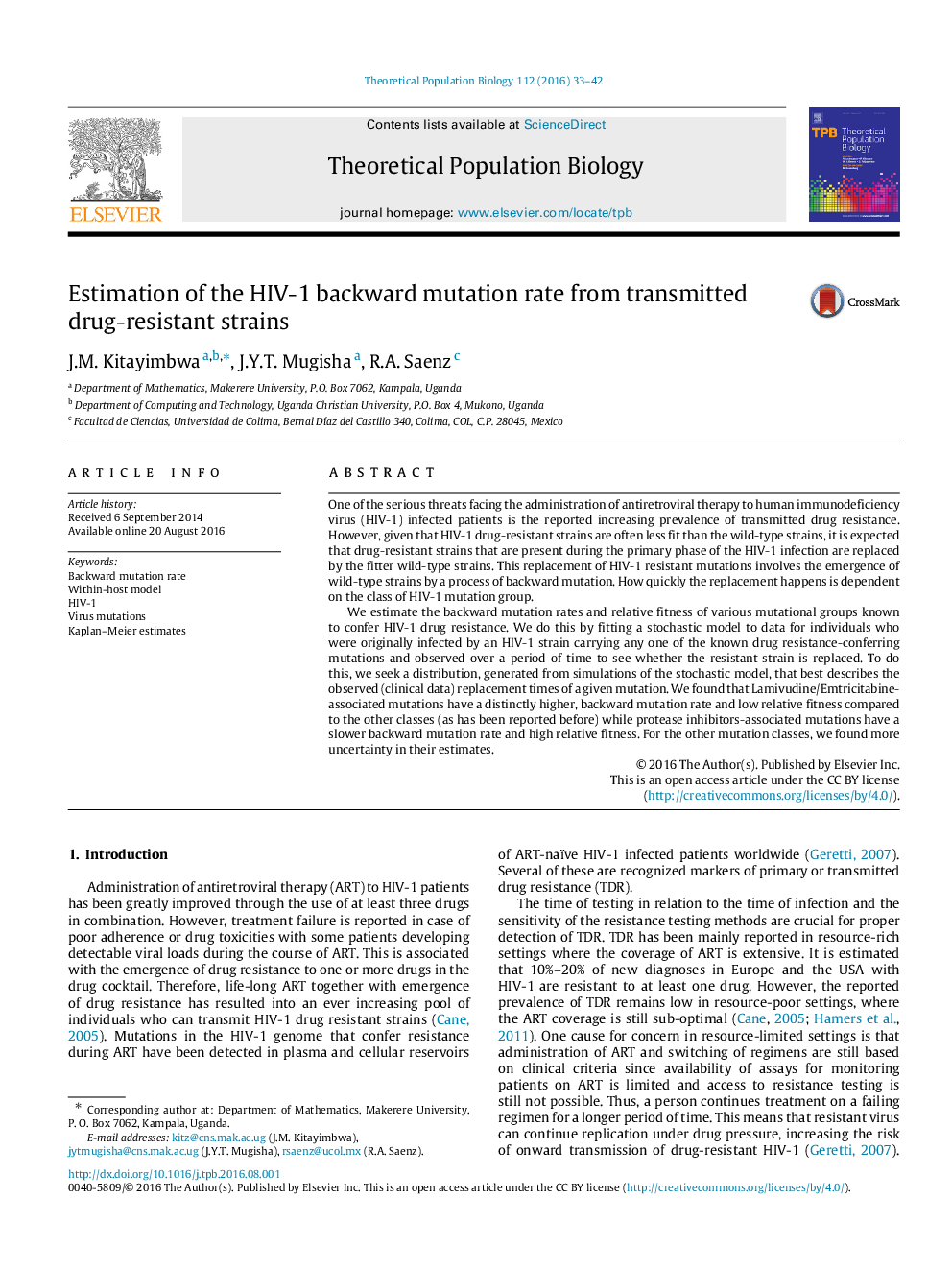| Article ID | Journal | Published Year | Pages | File Type |
|---|---|---|---|---|
| 6372282 | Theoretical Population Biology | 2016 | 10 Pages |
One of the serious threats facing the administration of antiretroviral therapy to human immunodeficiency virus (HIV-1) infected patients is the reported increasing prevalence of transmitted drug resistance. However, given that HIV-1 drug-resistant strains are often less fit than the wild-type strains, it is expected that drug-resistant strains that are present during the primary phase of the HIV-1 infection are replaced by the fitter wild-type strains. This replacement of HIV-1 resistant mutations involves the emergence of wild-type strains by a process of backward mutation. How quickly the replacement happens is dependent on the class of HIV-1 mutation group.We estimate the backward mutation rates and relative fitness of various mutational groups known to confer HIV-1 drug resistance. We do this by fitting a stochastic model to data for individuals who were originally infected by an HIV-1 strain carrying any one of the known drug resistance-conferring mutations and observed over a period of time to see whether the resistant strain is replaced. To do this, we seek a distribution, generated from simulations of the stochastic model, that best describes the observed (clinical data) replacement times of a given mutation. We found that Lamivudine/Emtricitabine-associated mutations have a distinctly higher, backward mutation rate and low relative fitness compared to the other classes (as has been reported before) while protease inhibitors-associated mutations have a slower backward mutation rate and high relative fitness. For the other mutation classes, we found more uncertainty in their estimates.
